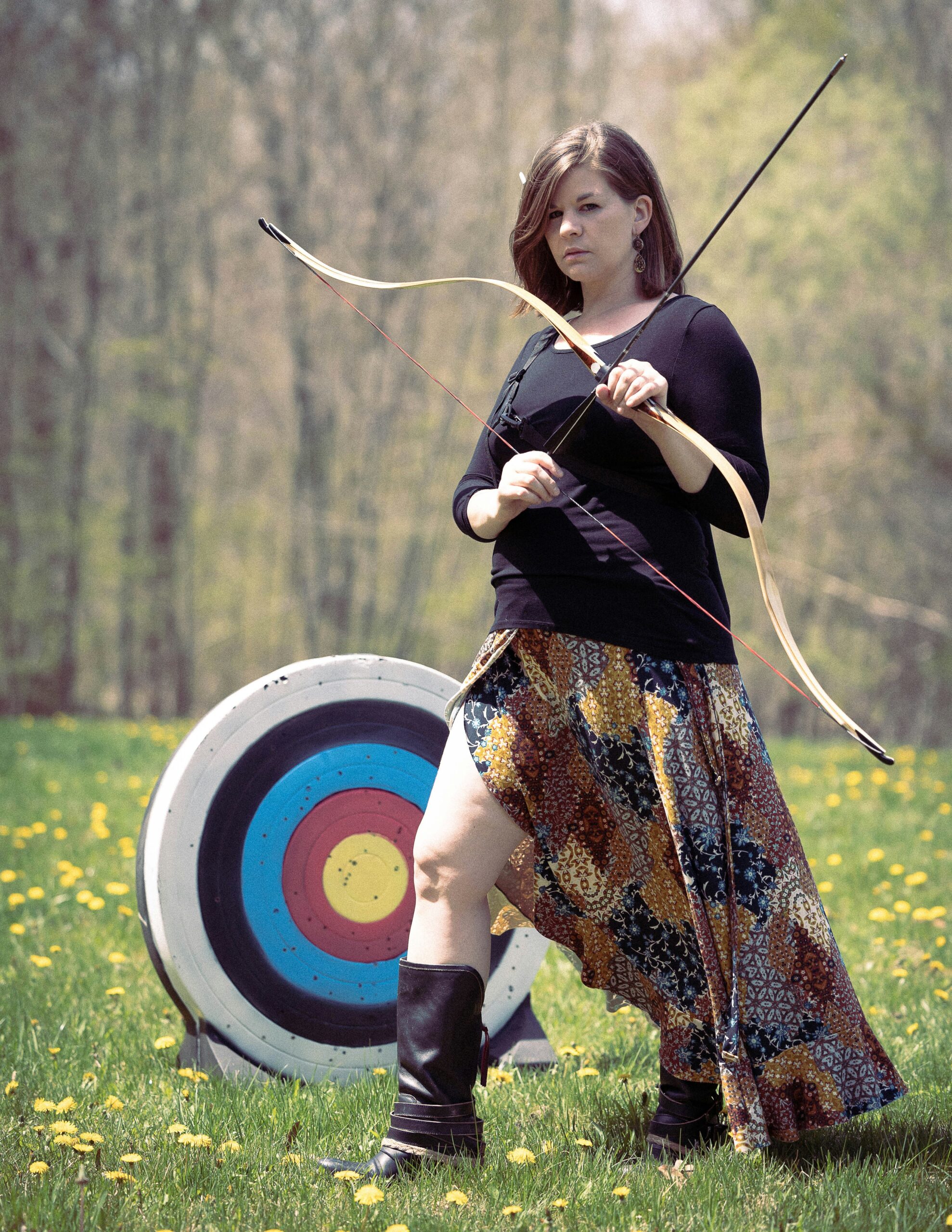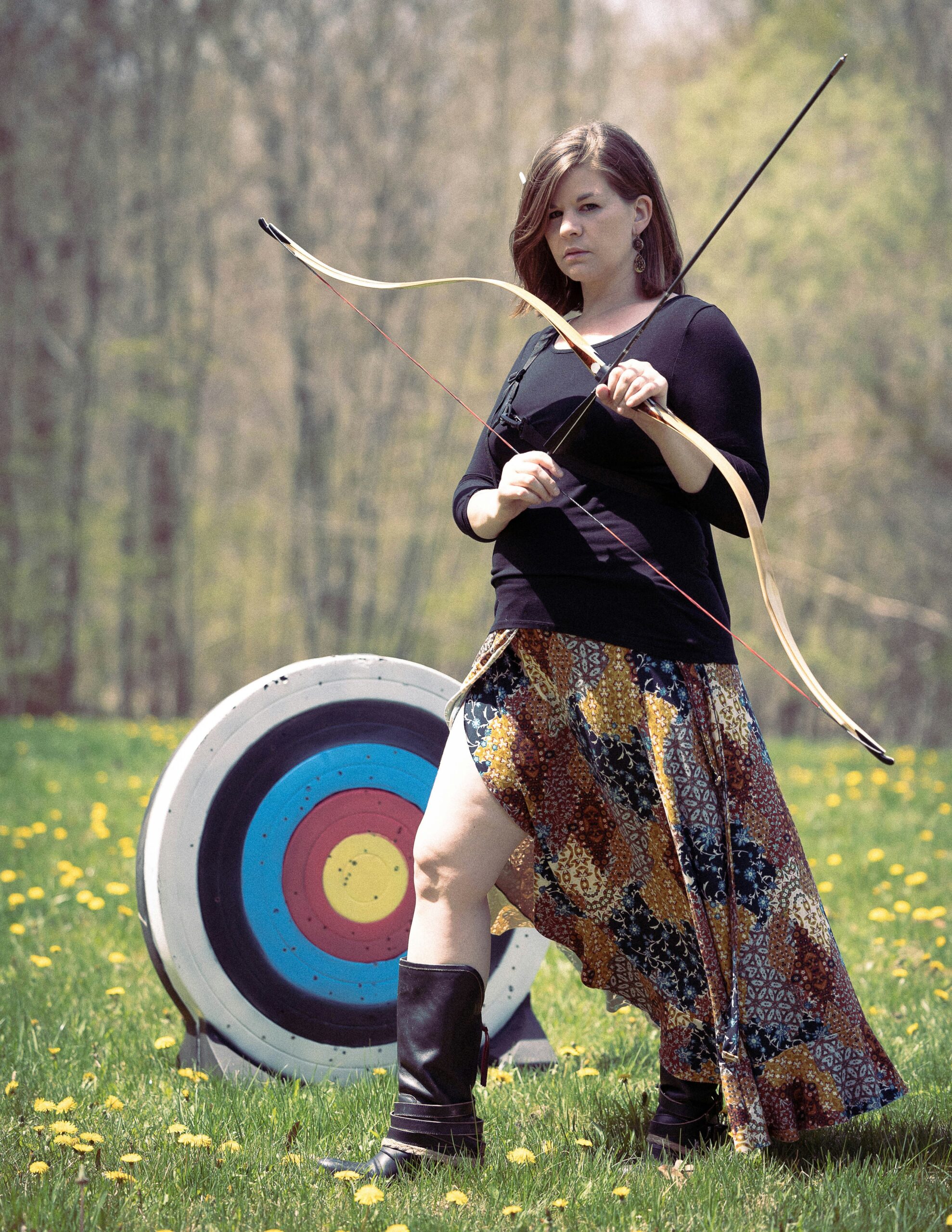Have you ever wondered if a rangefinding binocular can be used for archery? Well, the answer is yes! A rangefinding binocular is not only a handy tool for hunters, but it can also be a valuable asset for archers. With its ability to accurately measure distances and provide clear visuals, a rangefinding binocular can greatly enhance your archery experience. Whether you’re a beginner or an experienced archer, having a rangefinding binocular by your side can help improve your accuracy and overall performance on the range or in the field. So, if you want to take your archery skills to the next level, consider investing in a quality rangefinding binocular!
Understanding Rangefinding Binoculars
Rangefinding binoculars are a specialized type of binoculars that incorporate a built-in rangefinder. They are designed to measure the distance between the user and a target accurately. These binoculars are commonly used in various fields, including hunting, military and law enforcement operations, and sports such as archery.
What are Rangefinding Binoculars?
Rangefinding binoculars, as the name suggests, combine the functionalities of traditional binoculars and rangefinders into one device. While regular binoculars allow the user to see objects at a distance, rangefinding binoculars go a step further by providing accurate distance measurements. They typically feature built-in laser or optical rangefinders that use advanced technology to calculate the distance between the user and the target.

How Rangefinding Binoculars Work
Rangefinding binoculars rely on different technologies, depending on the model and brand. Laser rangefinding binoculars use a laser beam to measure the time it takes for the beam to bounce back from the target and calculate the distance accordingly. Optical rangefinding binoculars, on the other hand, utilize a system of prisms and reticles to estimate the distance based on the size of the target as it appears in the binoculars.
The Purpose of Rangefinding Binoculars
Use in Hunting and Outdoor Activities
Rangefinding binoculars have become an essential tool for hunters and outdoor enthusiasts. They provide a significant advantage by enabling precise distance measurements, allowing hunters to accurately gauge the distance to their target. This information is crucial for determining shot placement and selecting the appropriate weapon and ammunition.
Use in Military and Law Enforcement
In military and law enforcement operations, rangefinding binoculars play a crucial role in reconnaissance and surveillance tasks. These specialized binoculars assist in assessing distances between the user and potential targets, providing valuable information for strategic decision-making and ensuring operational effectiveness.
Use in Archery and Other Sports
Archery, a demanding sport that requires precision and accuracy, greatly benefits from the use of rangefinding binoculars. Archers can determine the exact distance to their intended target, allowing them to calibrate their shots and increase their chances of hitting the bullseye. Additionally, rangefinding binoculars can aid in identifying potential obstacles or hazards in the shooting range.

Practical Use of Rangefinding Binoculars in Archery
Range Estimation in Archery
Accurately estimating the distance to the target is critical in archery. Rangefinding binoculars provide archers with precise measurements, eliminating the guesswork involved in determining distance. By knowing the exact range, archers can adjust their shot accordingly, increasing the probability of a successful hit.
Evaluating Wind and Other Environmental Factors
Environmental factors, such as wind speed and direction, can significantly affect the trajectory of an arrow. Rangefinding binoculars allow archers to assess these factors by providing a clearer view of the target area. With this information, archers can make informed decisions on how to compensate for wind or other external influences, leading to improved accuracy.
Identifying Targets and Obstacles
When participating in archery, it is crucial to identify the target accurately and assess potential obstacles in the shooting range. Rangefinding binoculars offer a clear and magnified view of both the target and the surrounding area, helping archers in target acquisition and obstacle avoidance. This enhances safety and ensures a more efficient shooting experience.
Advantages of Using a Rangefinding Binocular for Archery
Increasing Accuracy and Precision
The primary advantage of using rangefinding binoculars in archery is the increased accuracy and precision they offer. By knowing the exact distance to the target, archers can adjust their aim accordingly, resulting in more consistent and successful shots. This advantage is particularly significant for long-range shooting, where minor deviations in distance estimation can have a substantial impact on accuracy.
Enhancing Safety in Archery
Rangefinding binoculars contribute to improved safety in archery by allowing archers to assess potential hazards or obstacles in the shooting range. With a clear view of the surroundings, archers can identify any encroaching individuals or objects that could pose a safety risk. This enhances overall safety during practice sessions and competitions.
Improving Overall Performance in Archery
Using rangefinding binoculars can significantly enhance an archer’s overall performance. With accurate distance measurements, archers can refine their shooting technique, make necessary adjustments, and consistently achieve better results. The confidence gained from using rangefinding binoculars can also have a positive impact on an archer’s mental game, leading to increased focus and concentration.

Disadvantages of Using a Rangefinding Binocular for Archery
Possible Distraction During Use
While rangefinding binoculars offer numerous advantages, they can also present a potential distraction when used in archery. Constantly shifting focus between the binoculars and the target can disrupt an archer’s concentration and rhythm, potentially leading to decreased accuracy. It is essential for archers to find a balance between utilizing the rangefinding capabilities and maintaining focus on the shooting process.
Dependency on Technology vs Developing Skills
Relying too heavily on rangefinding binoculars can hinder the development of essential archery skills, such as estimating distances by sight alone. Over time, archers may become overly reliant on the technological assistance provided by the binoculars and neglect honing their own distance estimation abilities. It is crucial for archers to strike a balance between utilizing the benefits of rangefinding binoculars and continuously improving their fundamental skills.
Cost Considerations
Rangefinding binoculars often come with a higher price tag compared to traditional binoculars or rangefinders. Consideration must be given to the budgetary constraints of archers, particularly beginners or those on a tight budget. However, it is worth noting that investing in a high-quality rangefinding binocular can provide long-term benefits and contribute to improved performance and accuracy in archery.
Types of Rangefinding Binoculars Suitable for Archery
Laser Rangefinding Binoculars
Laser rangefinding binoculars are widely used in archery due to their accuracy and convenience. They utilize a laser beam to measure the time it takes for the beam to bounce back from the target, providing precise distance calculations. Laser rangefinding binoculars often offer a variety of range modes, advanced target acquisition features, and adjustable settings to cater to different archery needs.
Optical Rangefinding Binoculars
Optical rangefinding binoculars use a system of prisms and reticles to estimate the distance based on target size. These binoculars offer a more traditional approach to rangefinding and are often favored by archers who prefer a simpler and more intuitive design. Optical rangefinding binoculars can be an excellent option for archers looking for reliable distance estimation without the need for advanced technology.
Rangefinding Binoculars with Advanced Features
Some rangefinding binoculars are equipped with additional advanced features, such as inclinometers, compasses, or digital displays. These features can provide archers with valuable information, including angle compensation, direction, and elevation, further enhancing their shooting capabilities. However, it is essential to consider whether these additional features are necessary for individual archery needs and whether the complexity outweighs the benefits.
Comparing Rangefinding Binoculars with Other Rangefinders
Rangefinding Binoculars vs Monoculars
Monoculars are single-barreled optical devices used for distance estimation. While they share similarities with rangefinding binoculars in terms of rangefinding capabilities, monoculars lack the advantage of binocular vision. Rangefinding binoculars provide a more immersive and precise experience, allowing archers to view the target with both eyes, leading to improved depth perception and accuracy.
Rangefinding Binoculars vs GPS Rangefinders
GPS rangefinders, also known as handheld GPS devices, provide distance measurements based on satellite positioning. While they offer convenience in terms of portability and the ability to store multiple waypoints, GPS rangefinders may not provide the same level of accuracy or real-time distance measurements as rangefinding binoculars. Additionally, they may not be as suitable for archery due to the lack of visual confirmation of the target.
Rangefinding Binoculars vs Smartphone Apps
Smartphone apps that utilize the device’s camera and built-in sensors can offer rangefinding functionalities. However, they may not provide the same level of accuracy or reliability as dedicated rangefinding binoculars. Factors such as limited field of view, dependence on lighting conditions, and potential issues with calibration can impact the effectiveness of smartphone apps for distance estimation in archery.
How to Choose a Rangefinding Binocular for Archery
Defining Your Needs and Budget
Before purchasing a rangefinding binocular for archery, it is crucial to evaluate your specific needs and establish a budget. Consider factors such as the typical shooting range distance, desired features and specifications, and personal preferences. Determining a budgetary limit can help narrow down the options and ensure you find a rangefinding binocular that suits your requirements.
Evaluating Features and Specifications
When selecting a rangefinding binocular for archery, consider the essential features and specifications that align with your specific needs. Factors such as maximum range, accuracy, magnification, field of view, reticle options, and durability should be taken into account. It is advisable to compare different models, read customer reviews, and seek expert recommendations to make an informed decision.
Considering Brand Reputation and Reviews
Taking into account the reputation and customer reviews of different brands can provide valuable insights into the reliability and quality of their rangefinding binoculars. Established brands with a strong reputation for producing high-quality optics are often a safe choice. Reading reviews from fellow archers or reputable sources can help gauge the performance and suitability of specific models for archery purposes.
Tips for Using Rangefinding Binoculars in Archery
Finding a Comfortable Hand Position
When using rangefinding binoculars in archery, it is essential to find a comfortable hand position that allows for a steady grip and minimizes hand shaking. Experiment with different grip styles and positions to determine what works best for you. A stable hand position will enable you to hold the binoculars steady, leading to clearer views and more accurate distance measurements.
Practicing Range Estimation
While rangefinding binoculars can provide precise distance measurements, it is still beneficial to practice range estimation skills without relying solely on the device. Regularly engage in exercises that involve estimating distances by sight alone, as this can help refine your abilities and reduce dependency on the binoculars. Striking a balance between using the technology and honing your skills will contribute to overall improvement in archery performance.
Maintaining Your Rangefinding Binoculars
To ensure optimal performance and longevity of your rangefinding binoculars, it is crucial to maintain them properly. Follow the manufacturer’s instructions regarding cleaning and storage. Keep the lenses clean and free from dirt and debris, and avoid exposing the binoculars to harsh conditions or extreme temperatures. Regularly check and replace batteries if necessary to ensure accurate range measurements when using the device.
The Future of Rangefinding Binoculars in Archery
Trends in Rangefinding Technology
The field of rangefinding technology continues to advance, with ongoing innovations and improvements. Future developments may involve increased accuracy, enhanced target identification capabilities, and integration with other devices or systems to provide a more comprehensive archery experience. The continuous evolution of rangefinding technology holds exciting possibilities for the future of rangefinding binoculars in archery.
Impact of Rangefinding Binoculars on Archery Practices
Rangefinding binoculars have already made a significant impact on archery practices by improving accuracy, enhancing safety, and increasing overall performance. As more archers recognize the benefits of using rangefinding binoculars, they are likely to become an essential tool in the archery community. The widespread adoption of these devices may reshape archery practices and lead to new standards and techniques.
Possible Innovations in Rangefinding Binoculars for Archery
Future innovations in rangefinding binoculars for archery may include advancements in range measurement accuracy, improved battery life, and the incorporation of additional features specifically tailored to archery needs. Manufacturers may explore technologies such as augmented reality overlays or integration with digital training platforms to create a more immersive and interactive archery experience.
In conclusion, rangefinding binoculars provide significant advantages for archers, offering precise distance measurements, enhanced safety, and improved overall performance. While there are potential disadvantages, such as distractions and dependency on technology, the benefits outweigh the drawbacks for many archers. By carefully considering one’s specific needs, evaluating available options, and practicing proper usage techniques, archers can harness the power of rangefinding binoculars to elevate their archery skills and achieve greater success on the range.

